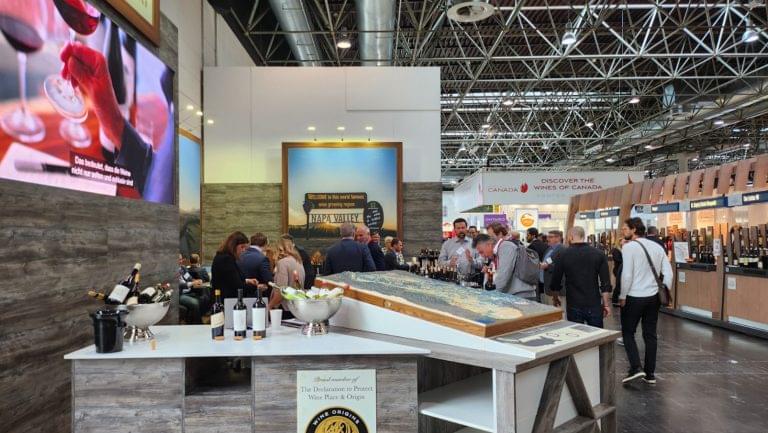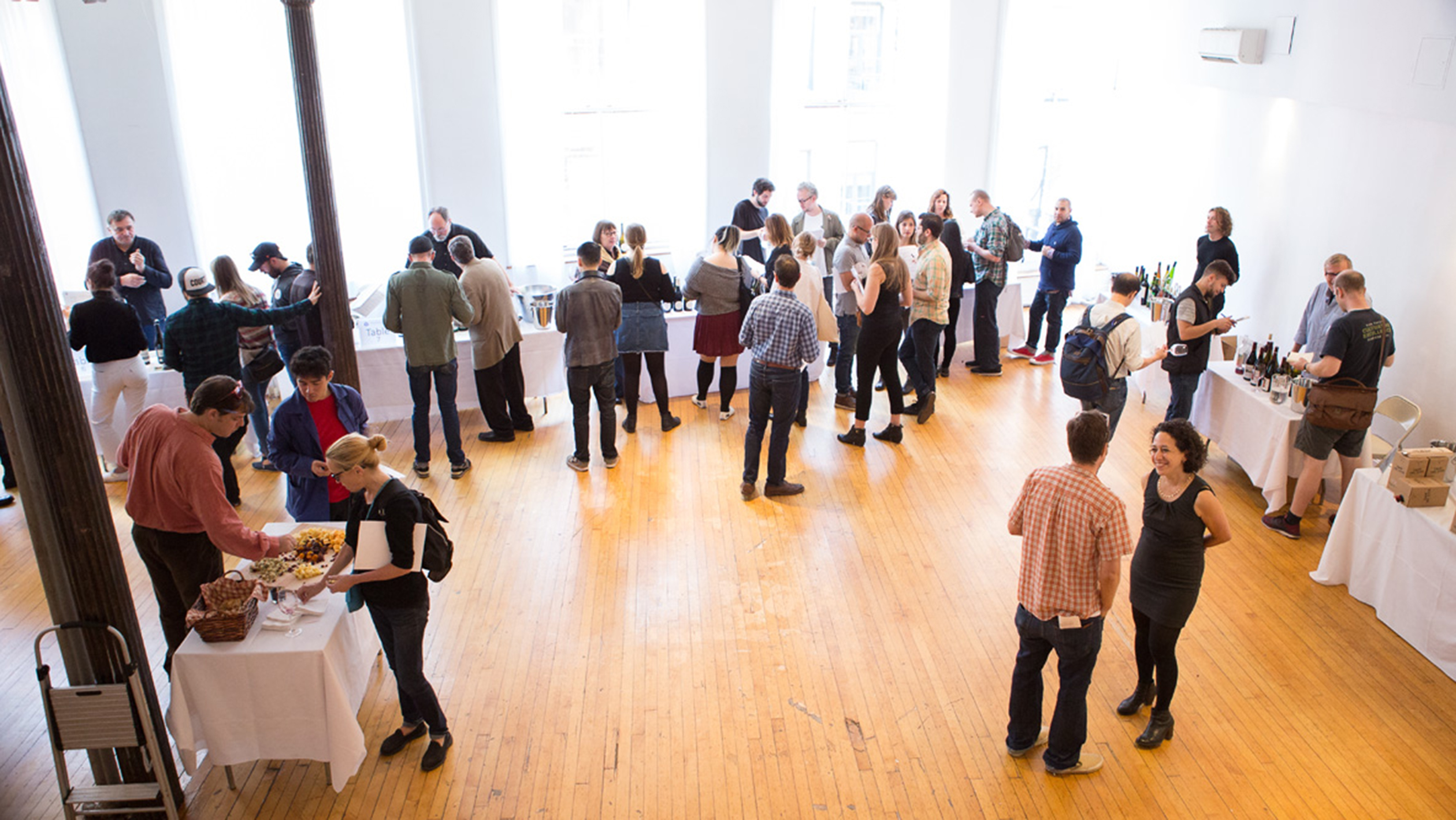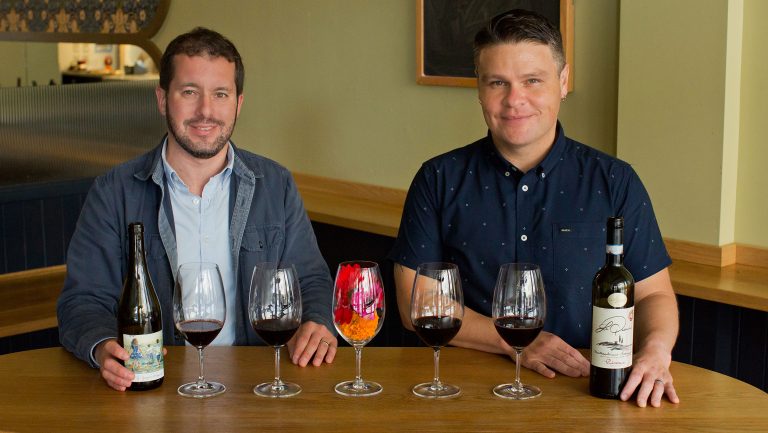Annual walk-around portfolio tastings are some of the industry’s most prominent trade events, hosted by importers and distributors to show off their wines to industry professionals. But more recently—particularly after portfolio tastings were not held due to the pandemic—some companies have wondered whether big walk-around tastings are the most effective way to build brands and increase sales.
“We are slowly starting to bring portfolio tastings back, just not on quite the same scale as in the past,” says Nicole Drummer, the public relations manager for Winebow Imports. The same goes for Vineyard Brands. “We rarely do big portfolio tastings,” says Catherine Cutier, the vice president of marketing and strategy. “We usually set up tastings per theme, per country, per brand, but we never showcase all our brands all at once.”
It’s more important than ever to get the most out of these expensive, international undertakings, particularly because their benefits are difficult to precisely calculate, even after the fact. SevenFifty Daily surveyed several importers and distributors to find out how they are rethinking portfolio tastings and ensuring they get the biggest bang for their buck.

Don’t miss the latest drinks industry news and insights. Sign up for our award-winning newsletters and get insider intel, resources, and trends delivered to your inbox every week.
Target Decision-Makers by Highlighting New and Interesting SKUs
One common observation among importers and distributors is that in today’s economy retailers and restaurants are understaffed, making buyers busier and more selective in which events they attend. The bright side, importers say, is now those who attend are likely to be decision-makers.
Jenny Lefcourt, the cofounder of Jenny & Francois Selections, says she entices retailers by “flagging wines that will be available that are on allocation or in short supply that they normally wouldn’t see.” Similarly, Scott Ades, the co-owner of Dalla Terra Winery Direct, says it’s important to limit the number of wines poured, but to emphasize bottles retailers might not have previously seen.
Debbie Zachareas, the owner of Ferry Plaza Wine Merchant, prefers to attend tastings that feature “a new discovery that we would not get in a weekly appointment” with a sales rep. Invitations listing all brands represented are standard, and advance tasting directories in print and online are essential. “On the train to New York, I take a look at the program and make notes as to who I’ll see,” says wine merchant Frank Pagliaro of Frank’s Wine in Wilmington, Delaware.
Choose the Right Timing and Location
At tastings, importers like to have winemakers pouring their own wines and answering questions from retailers and restaurant buyers. To make that possible, many suggest holding portfolio tastings in early spring after pruning or late fall after harvest, as winemakers tend to have more flexibility during these times.
Once a date is set, the next important decision is the location. “Advanced digital platforms, such as Somm.ai, give us access to critical information about what restaurants carry certain wines or how many SKUs are in a certain market,” says Megan DeAngelo, an account supervisor with marketing agency Colangelo & Partners, which advises multiple importers. “With this information, we can identify the most strategic location.”
Chilean producer VSPT has multiple brands and has just begun to self-import. They wanted their first New York portfolio event to come off as seamlessly as possible. “We were more concerned with location than we were with trying to impress with something sexy,” says Andrés Tauber, the U.S. president. “[We wanted to] find a place where people from all around New York and nearby states could easily get to.” He picked a hotel within walking distance of Penn Station.
Advance planning, cost analysis, and prompt follow-up are all vital components for smart exhibiting, whether for big booths or first-time players

A Winery Guide to Trade Show Success
A dynamic space can also help with event logistics and ambiance. “Rather than have just one big room, we sometimes use multiple rooms to break things up and make it more manageable,” says Bill Terlato, the president and CEO of Terlato Wine Group.
“Wine never tastes better than when you take a bottle out among the vines,” adds Lefcourt. “But that can’t always be done, so the next best thing is to have a tasting outside, as we did last year, or someplace that’s open and airy.”
For smaller, road-show portfolio events, “We change our host cities from year to year, following a three-year rotation among the top 12 cities in the country,” says Kobrand Wine & Spirits brand director Marco Sorio. This year, Kobrand’s Italian portfolio is making stops in Miami, Houston, Phoenix, and Los Angeles.
Plan for Tasting Efficiency
While some importers arrange tasting tables alphabetically, Terlato says that arranging tables by category or by a natural tasting progression may make more sense. “We try to have a flow to things—from light whites to full-bodied reds.” Other companies organize by region or country, which can help attendees focus and save time.
Many companies also make a predetermined plan for how their sales and marketing staff will work a portfolio event. “Our goal is to have the retailer hook up with his sales rep and tour the tasting together,” says Ades. “We make sure they have a chance to meet with the person who made the wine.”
Gitter echoes this. “Our sales reps like to chaperone their customers,” he says. “They know their needs and can steer them to where they are most interested.”
Diversify Your Offerings Beyond Wine
Increasingly, portfolio tastings are showcasing broader beverage portfolios, not just wine. “Retailers and restaurants are short-staffed, and they want to kill as many birds as they can with one stone,” says Michael Gitter, the vice president of marketing for Vintus. “In addition to wine, this year we’re adding our spirits and sake.” At Terlato’s portfolio tasting, they showcase wines spirits, botanical essences, and non-alcoholic products, and they bring mixologists in to create cocktails.
This also holds true for Empson USA. “In New York, we had a bar to the side with cocktails,” says CEO Tara Empson. “It gave people a chance to take a breather at the bar, make their tasting notes and look at their book to check who they haven’t seen.”

While cheese, crackers, and charcuterie provide standard food matches, some companies offer more creative fare, especially if the event is held in a hotel or restaurant. Late arrivals at Jenny & Francois portfolio tastings may even get a special treat. “Our tastings last from late morning to late afternoon,” says Lefcourt. “We take all the open bottles and order appetizers at the end of the day. We used to do baguettes, fruits, and cheese, but the last few times we’ve done something more original, like Japanese hors d’oeuvres.”
Some events are also offering goody bags to further solidify brands in the minds of buyers. They often include branded swag bags stuffed with merchandise such as corkscrews and pens.
Maximize Producers’ Time
While it’s not possible for every producer to attend, especially those from other countries, winemakers are encouraged to attend portfolio tastings whenever possible. “This adds a personal touch, allowing attendees to delve into the stories behind each vintage,” says Sorios. At the same time, winemakers have the opportunity to learn more about the American market.
“While they are here, we arrange for producers to have media interviews and to do regional market visits,” says Terlato. “As long as they are coming a long way, we want to make best use of their time.” VSPT also extended its winemakers’ stay by splitting them up to make additional visits to other cities.
Some importers offer invitation-only educational seminars and guided tastings before the walk-around tastings begin, allowing buyers to get to know the winemakers and management teams. At its initial New York portfolio tasting, VSPT did a seminar on Chile’s extreme wine regions. “For our first time as an importer, it was a fantastic opportunity to share about culture and winemaking,” says Tauber. Terlato echoes this. “We sometimes will hold classes, usually led by someone from the winery.”
No one can offer a mathematical formula for what makes a successful portfolio tasting, and most admit success is a judgment call. “The event’s success hinges on sustained brand exposure and a deeper understanding of local markets and individuals,” says Sorio. “These elements are fundamental to the event’s enduring impact.”

Dispatch
Sign up for our award-winning newsletter
Don’t miss the latest drinks industry news and insights—delivered to your inbox every week.
Roger Morris is a Delaware-based writer who for the past 20 years has contributed articles on wine, food, and popular culture to about a dozen publications in the U.S. and Europe. Currently, he writes for World of Fine Wine, Drinks Business, Meininger’s, VinePair, Wine & Spirits, and Global Drinks Intel, among others. In prior years, he taught writing at Arizona State University and the University of Delaware and was an industry marketing executive.






